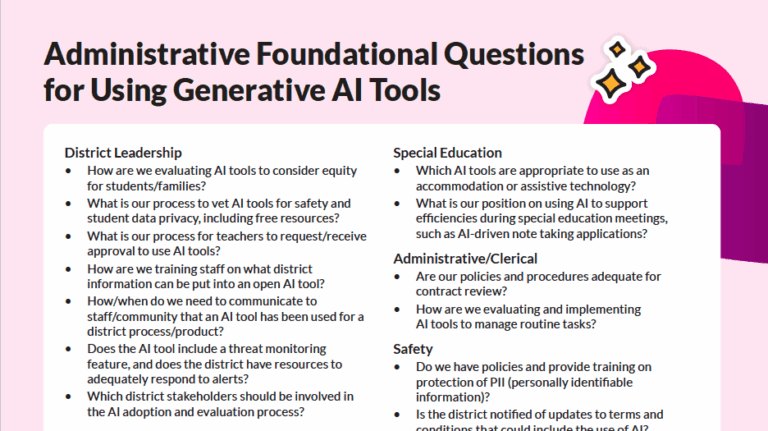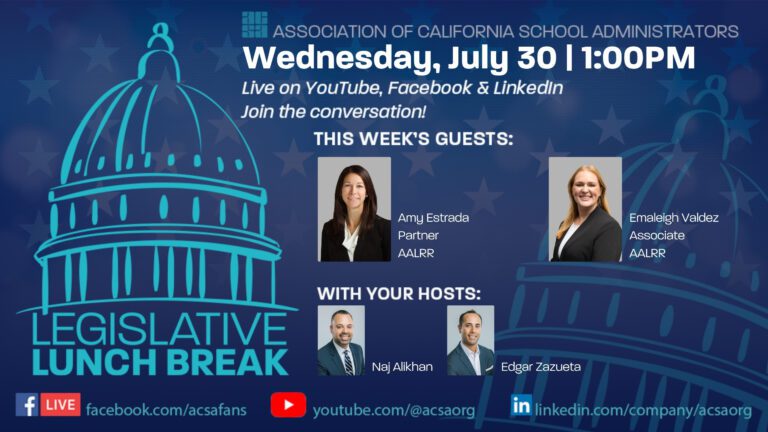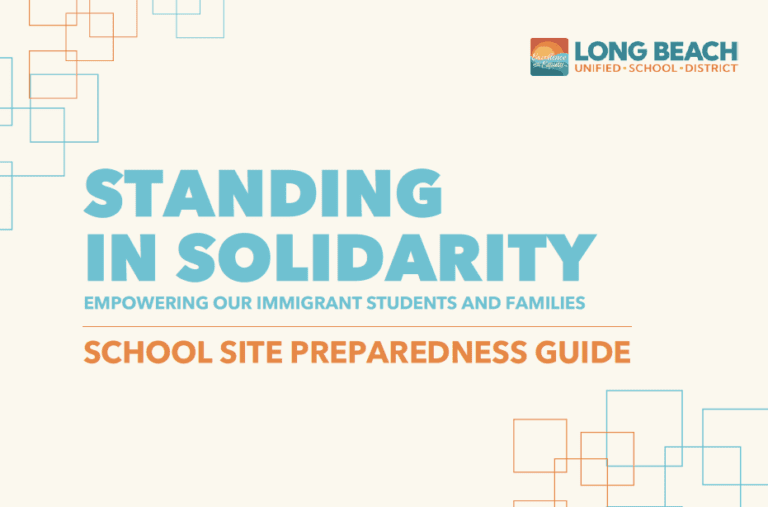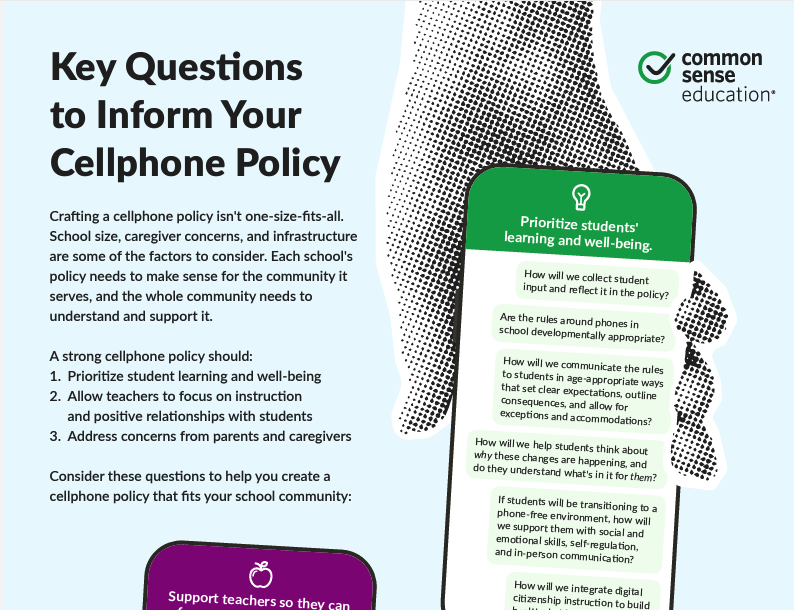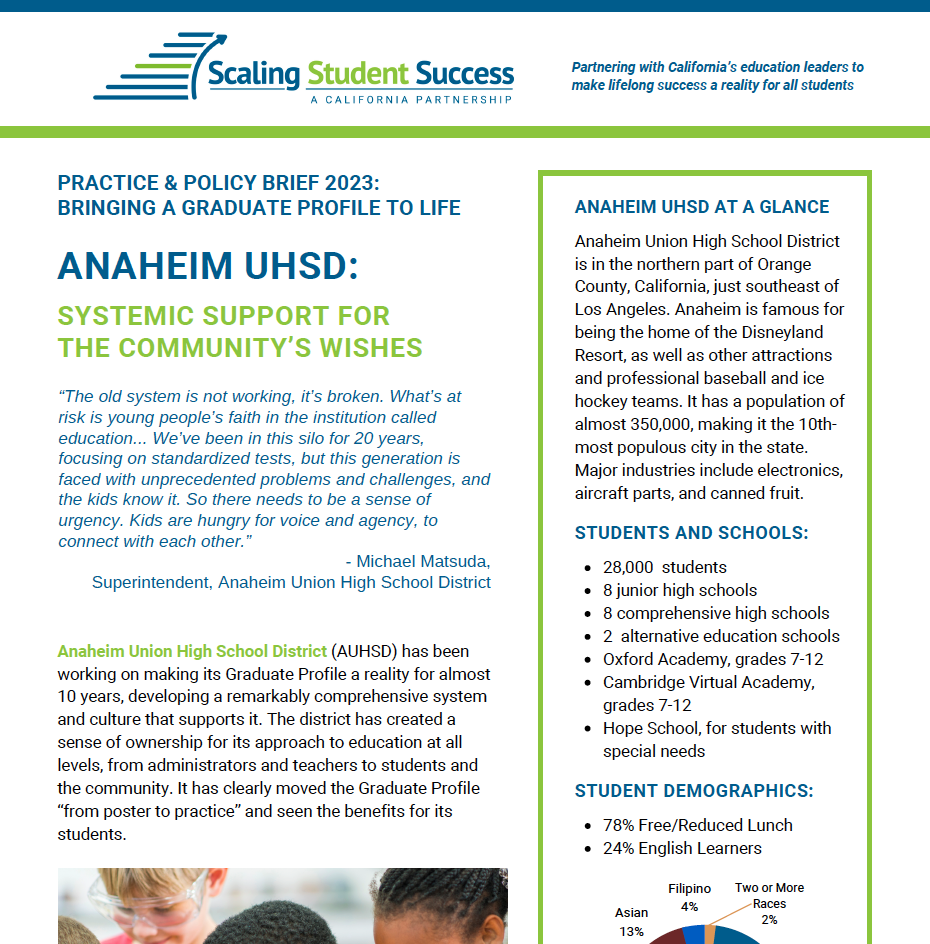There are a number of variables that must be considered in coming to a sound policy decision on school weapons policies. There is no ‘one size fits all’ answer; each district must navigate the policy decision for themselves.
By Catherine Jones
On Oct. 1, 1997, Luke Woodham grabbed a lever action deer rifle, donned a trench coat, and headed to Pearl High School in Pearl, Miss., where he shot and killed two students and wounded seven others.
Vice Principal Joel Myrick apprehended Woodham as he tried to escape, allegedly on his way to another school to continue his rampage. Hearing the shots, Myrick ran to his truck to retrieve his Colt .45 and bullets from a secured case. Intercepting Woodham at his vehicle, Myrick held the Colt to the shooter’s head and said, “Why are you shooting my kids?”
Woodham is one of the earliest school shooters of the modern day, and Myrick is one of the first armed school employees to stop an attack. Although Myrick’s actions were largely applauded as saving lives, he was not regarded universally as a hero; he soon felt betrayed and isolated. Some of Myrick’s colleagues simply could not accept that he had held a gun to a student’s head.
This case provides an example of how the decision to arm school employees can be confounding and complex. The debate has been ongoing at the national level since the late 1990s, yet shows no sign of resolution or conclusion.
With the recent revisions to the California Gun Free School Zone Act, under Senate Bill 707, many California school administrators are now contemplating weapons policies for the first time. With this in mind, how is a school superintendent to decide? There are a number of variables that must be considered in coming to a sound policy decision.
It is possible to consider this issue from the standpoint that there is no one correct nor universally applicable outcome; rather, there are possible options for every school district applicable to the unique environment, context, values, current capabilities and competencies (or those that could exist), and risk tolerance.
The measure of effectiveness for each criterion considered is whether the risk associated with each criterion has been managed (or can be) in an acceptable manner. Given the current legal and social environment, there is no “one size fits all” answer; each district must navigate the policy decision for themselves.
Professor Robert Brinbaum characterizes the policy options as being either MoreGuns or BanGuns. These are positions which reflect the main paradigms in today’s gun debate.
Birnbaum asserts that MoreGuns and BanGuns groups persist in their advocacy because they are promoting goals using data and arguments processed through the lens of their intrinsic values. This prevents an objective assessment of the issue.
According to Brinbaum, instead of basing policy on the “assessment of empirical evidence, empirical evidence is selectively collected, interpreted, and used to support a priori commitments to a policy view.” This makes MoreGuns and BanGuns ideologies self-validating because selective data and arguments will always support and reinforce the desired interpretation. However, there is a middle ground.
A SomeGuns approach is founded on the concept that not all firearms should be prohibited and therefore an acceptable compromise can be achieved. A SomeGuns policy option provides reduced risk and liability for the school district, restricts who can carry a firearm and requires less oversight than a MoreGuns policy approach. The main characteristics of each policy option are as follows:
BanGuns
A BanGuns ideology primarily comes as a result of any of the following:
- An unwillingness to incur any liability or any level of risk associated with firearms (risk avoidance).
- A culture that fundamentally does not support the presence of firearms on campus (risk avoidance).
- A determination that adequate insurance cannot be obtained or is cost prohibitive (the inability to transfer risk).
- A lack of capacity/capability to administer a weapons policy (inability to mitigate risk).
A BanGuns approach is also appropriate for districts where their limited resources have already been allocated to early intervention programs, such as school psychologists or social workers who implement behavioral intervention strategies, and strive to address the underlying school culture.
This approach does not account for shooters who are not associated with the school; however, research has shown the majority of school shooters have some type of relationship with the school they attack, thereby validating efforts to invest in culture and threat assessment strategies.
MoreGuns
A MoreGuns ideology results when culture and capacity support firearms on campus. To date, this ideology has been most prevalent in states with liberal gun laws, which does not include California. In these instances the following characteristics apply:
- Parent and employee groups support guns on campus and no opposition is expressed toward arming staff or security personnel.
- The use of a firearm is a desired part of the job to provide enhanced security on campus (acceptance of risk). However, a caution is noted here. According to an interagency security committee, “Confronting an active shooter should never be a requirement of any non-law enforcement personnel’s job.” Direct response is an individual choice.
- Attitudes are accepting of voluntary carry by personnel who have a license to carry a concealed weapon.
- The district is willing to incur liability, has adequate insurance in place, and uses indemnification agreements where appropriate; thereby achieving adequate risk transfer.
- Training for persons authorized to carry a firearm is robust and consistent with Peace Officer Standards and Training (POST) or other as prescribed by policy or regulation (risk mitigation).
SomeGuns
This ideology is a middle ground, where neither gun advocates nor gun opponents achieve their fundamental goal. This approach is characterized primarily by the following:
- The culture may be opposed to arming civilian employees but does not oppose armed security or law enforcement personnel.
- A willingness to incur some liability but in a limited fashion (risk acceptance).
- Adequate insurance is in place and contractual liability pertaining to the use of outside agencies or firms has been addressed (risk transfer).
- Training for persons authorized to carry a firearm is robust and consistent with POST or other as prescribed by policy or regulation (risk mitigation).
A successful policy approach considers the whole system of interconnected pieces and understands how one decision or action affects other parts. Using risk management principles as the backdrop and foundation for making policy provides the best opportunity for success moving forward by prompting policymakers to objectively assess culture, capability and resources in creating sound policy. As a decision-making process, it involves the following sequential steps:
- Identifying and analyzing exposures, conducting risk assessment, setting strategic goals and objectives and determining constraints.
- Examining and evaluating options for dealing with the exposure/risk.
- Selecting the apparently best risk management techniques/options.
- Implementing the chosen techniques/options.
- Monitoring results to determine effectiveness and results.
Although rooted in the insurance industry, the risk management process provides an applicable framework for use in decision making where any type of risk presents the possibility of unintended or undesired loss to an organization.
Douglas Hubbard defines risk management as, “the identification, assessment and prioritization of risk followed by coordinated and economical application of resources to minimize, monitor and control the probability and/or impact of unfortunate events.” More simply put, risk management is “being smart about taking chances.”
The literature is filled with commentary and proposals about what schools should do on this issue and what policy they should adopt. Advocates for arming school employees (MoreGuns) cite the need for school staff to become first responders in order to provide protection in the event of an active shooter scenario. They say allowing concealed weapons provides a deterrent because a shooter would not know who is carrying a weapon and therefore would likely choose another target.
In addition, they also assert that gun prohibitions only make schools more vulnerable because the bad guys know staff are unarmed.
With law enforcement response times of 20 minutes to an hour in rural areas, the MoreGuns folks assert that arming school employees is a prudent decision. The Federal Bureau of Investigation has noted the special vulnerability of rural schools and has acknowledged that armed citizen responders should be anticipated.
Lastly, the MoreGuns advocates are supporters of gun rights in general and big Second Amendment supporters. One of the most detailed resources on the subject of guns in schools is the National Rifle Association’s National School Shield Program. Not surprisingly, it advocates for more guns in schools, but does so via more school resource officers and qualified school personnel.
As passionate as the MoreGuns advocacy is, so is the BanGuns advocacy.
Former New York Mayor Michael Bloomberg pledged $50 million to his group Everytown for Gun Safety to help fight the NRA. The BanGuns constituency believes the gun problem cannot be solved by adding more guns. This constituency includes school administrators, teachers’ unions, law enforcement agencies, higher education officials, campus police chiefs, some student body associations, and the Brady Center to Reduce Gun Violence.
It is ironic that with an abundance of gun legislation proposing to lessen gun restrictions on primary, secondary and higher education campuses, the recipients of the legislation are overwhelming opposed to adding more guns. Their chief argument is increased risk due to the presence of firearms.
A recent accident where a Utah teacher accidentally shot herself is a good example. Although shooting herself is bad enough, if she had accidentally shot another staff member or student there would have been a great deal more public outrage.
Utah has been allowing concealed carry on campuses for many years and has been heralded by the MoreGuns constituency as an example to follow. The BanGuns constituency can now use Utah as rebuttal to the argument that accidents never happen.
Other concerns on this side of the issue include increased liability, confusion during emergencies over who has a weapon, what level of training is appropriate when a teacher may have to shoot their own student, and that the unknown specter of guns on campus creates fear and paranoia that is not conducive to a healthy learning environment.
The training element is one that is hotly debated and one where the BanGuns folks seem to have the upper hand.
What is the minimum amount of training required to enable a layperson to develop an appropriate mindset and become proficient in handling a handgun under volatile, unpredictable and stressful situations? For law enforcement and security personnel, a minimum of 24 hours of training is required for firearm certification, but the initial basic training is not enough. Accurately shooting a weapon, especially under pressure, is a perishable skill, and ongoing training and range time is critical in order to maintain proficiency.
BanGuns advocacy says that educators are not warriors and cannot be trained to become so. Lastly, they also claim that adding more guns will not provide a meaningful deterrent because it will not stop the individuals who are mentally ill or suicidal. If anything, it increases the likelihood they choose a target where they know they will encounter armed individuals. It could become somewhat of a “suicide by cop” scenario.
For some shooters, dying is part of their plan. “Take everyone down, turn the guns on the cop, take out myself. Perfecto,” were the words written in preparation for an attack at Connetquot High School in New York in 2007. In a study of 48 shooters conducted by Peter Langman, 46 percent died by suicide, thereby ending the attack. In addition, many of the suicides occurred after police arrived and engaged the shooter with gunfire.
California school agencies have liability for the actions and in some instances the inactions of their employees in addition to liability for the failure to perform a statutory duty. Because there is no statutory requirement for schools to implement a weapons program or to allow employees to carry firearms, there is no liability for declining to do so.
However, once a duty is accepted, by implementing a firearm policy or allowing individuals to carry concealed weapons, the district creates potential adverse liability for itself. This liability is found in the established principle that a duty voluntarily assumed must be performed with care.
Whether or not the assumed duty, such as protecting students or the failure thereof, is performed with reasonable care will be a decision for the trier of fact (judge or jury). In addition, under tort principles of negligence, K-12 educators owe students a duty to anticipate foreseeable dangers and to take reasonable steps to protect those students from that danger. To this end, K-12 educators owe the same degree of care and supervision to their students that reasonable and prudent parents would employ in the same circumstances for their children.
Making the decision to arm employees because they had no other security policy in place, Sidney Ohio school district Superintendent John Scheu said, “We may not stop a shooter from getting into the building. If they want to, they will find a way, but if they enter, we can stop them in seconds.”
While adding trained faculty to its current cadre of armed security at its entrances potentially increases security at its schools, the superintendent’s statement “we can stop them in seconds” is concerning. It could be argued that the Sidney policy creates the duty to stop armed intruders in seconds. When (if) that does not happen, it logically follows that the district will have failed to fulfill its duty (even if self-imposed), and therefore liability may attach.
Generally, immunity exists if the injury results from the public employee’s discretion to undertake an activity, and liability attaches if it results from his or her negligence in performing it after she or he has made the discretionary decision to do so.
Providing armed security at schools may be a desired policy approach, but the outcomes of doing so should not be exaggerated. There is no evidence that having armed personnel on site effectively deters a potential shooter. Unfortunately, there have been several school shootings where the perpetrator knew there were armed personnel on site yet still continued with his plan.
A MoreGuns approach should not be portrayed as anything other than a desire to expand response capabilities, avoiding any commitments that can be used against the district for failure to act. A MoreGuns approach leaves little margin for error. It may increase the level of safety, but it also brings the highest level of liability to the school agency.
Every element of a MoreGuns policy can potentially form the basis for a lawsuit and adverse liability. Therefore, schools that adopt this ideology must have a high tolerance for risk, strong risk management oversight, and rigorous policy administration.
Decisions to arm employees or provide armed security are not guarantees a shooter will be stopped before killing or injuring victims; therefore, it is critical that the decision making process is objective and properly assesses the overall risk. The use of risk management principles supports the decision-making process by introducing objective decision making where process drives outcome and ideology rather than the other way around.
Brinbaum puts it as “ready (have an ideology), fire (attack using the ideology), and then aim (construct a narrative).” In a risk-management-driven approach, the ideology and resulting policy come as the end-result of the process; thereby righting the sequence to ready (setting goals and objectives), aim (assessing risks and constraints), and then fire (implementing corresponding policy).
Employing The Risk Assessment Matrix for Gun Policy in K-12 Schools (Wilson Jones, 2016), can guide stakeholders in determining the level of risk. It illustrates how key decision points move from conditions warranting risk avoidance, to conditions supporting policy and acceptable levels of risk.
The Decision Framework for Determining Concealed Weapons Policy in California K-12 Schools (accessible at https://www.hsaj.org/articles/10932) is another decision making tool that provides a collective criteria assessment requiring affirmative responses prior to moving forward with policy.
The policy options of MoreGuns (allow teachers to be armed), BanGuns (no one is armed), or SomeGuns (trained security or law enforcement can be armed, but not teachers) represent the various paradigms that exist or can exist to create policy.
In her book Thinking in Systems, author Donella Meadows asserts that no paradigm is “true.” Therefore, none of these policy options is truer than the next, but instead are all true, and it is the mission of superintendents and boards of trustees, in partnership with the applicable stakeholders, to determine which option is most true for them. They must honestly look at the feedback within the system, assess capacity and capability. This will help create sound policy. Anything less is shooting in the dark.
Resources
Birnbaum, Robert. “Ready, Fire, Aim: The College Campus Gun Fight.” Presented at the 2012 Annual Meeting of the Association for the Study of Higher Education, Las Vegas NV, November 2012. http://files.eric.ed.gov/fulltext/ED537905.pdf.
Caldwell, Leigh Ann, and Kevin Bohn. “Bloomberg to Spend $50 Million to Challenge NRA on Gun Safety.” CNN News, April 16, 2014. http://www.cnn.com/2014/04/15/us/bloomberg-gun-safety-initiative/index.html.
Comptroller General of the United States. Highlights of a Forum: Strengthening the Use of Risk Management Principles in Homeland Security. Washington, DC: U.S. Government Accountability Office, 2008.
Head, George, and Stephen Horn. Essentials of Risk Management. 3rd ed. Malvern, PA: Insurance Institute of America, 2003. http://www.theinstitutes.org/guide/designations/associate-risk-management-armtm.
Hubbard, Douglas W. The Failure of Risk Management: Why It’s Broken and How to Fix It. Hoboken, NJ: John Wiley & Sons, 2009.
Hutchinson, Asa. Report of the National School Shield Task Force. The National School Shield. 2013. http://s3.documentcloud.org/documents/671142/nss-final.pdf.
Interagency Security Committee. Planning and Response to an Active Shooter: An Interagency Security Committee Policy and Best Practices Guide. Washington, DC: Interagency Security Committee, 2015. http://www.dhs.gov/sites/default/files/publications/isc-planning-response-active-shooter-guide-non-fouo-nov-2015-508.pdf.
Langman, Peter. “On-Scene Behavior of School Shooters: The Resolution of Rampage Attacks.” August 12, 2015. https://schoolshooters.info/sites/default/files/on_scene_behavior_1.1_0.pdf.
Langman, Peter.. “Ten Lessons Learned from School Shootings and Foiled Attacks.” July 31, 2014. https://schoolshooters.info/sites/default/files/ten_lessons_1.1.pdf.
Laugesen, Wayne. “A Principal and His Gun.” October 15, 1999. Dave Kopel. http://www.davekopel.com/2A/OthWr/principal&gun.htm.
Meadows, Donella. Thinking in Systems: A Primer, ed. Diana Wright. White River Junction, VT: Chelsea Green Publishing, 2008.
Rackley, Paul. “Perishable Skills.” American Rifleman. May 22, 2013. http://www.americanrifleman.org/articles/2013/5/22/perishable-skills/.
Schlanger, Zoe. “In Utah, Teachers Can Carry Guns into School and Not Tell Anyone.” Newsweek, September 11, 2014. http://www.newsweek.com/utah-teachers-can-carry-guns-school-and-not-tell-anyone-269923.
Velez, Mark A. Guns, Violence, and School Shootings: A Policy Change to Arm Some Teachers and School Personnel. Selected Works. 2013. http://works.bepress.com/mark_velez/1.
Volokh, Eugene. “Do Citizens (not Police Officers) with Guns Ever Stop Mass Shootings?” The Washington Post, October 3, 2015. https://www.washingtonpost.com/news/volokh-conspiracy/wp/2015/10/03/do-civilians-with-guns-ever-stop-mass-shootings/.
Zgonjanin, Miljia. “Chalk Talks: When Victims Become Responsible: Deputizing School Personnel and Destruction of Qualified Immunity.” Journal of Law & Education 455, no. 43 (2014).
Catherine Jones is the director of Risk Management Services for the Kern County Superintendent of Schools Office. She has been a safety and risk management professional for more than 30 years. This article is based on the thesis, “Armed to Learn: Aiming at California K-12 School Gun Policy,” accessible at www.hsaj.org/articles/10932.








